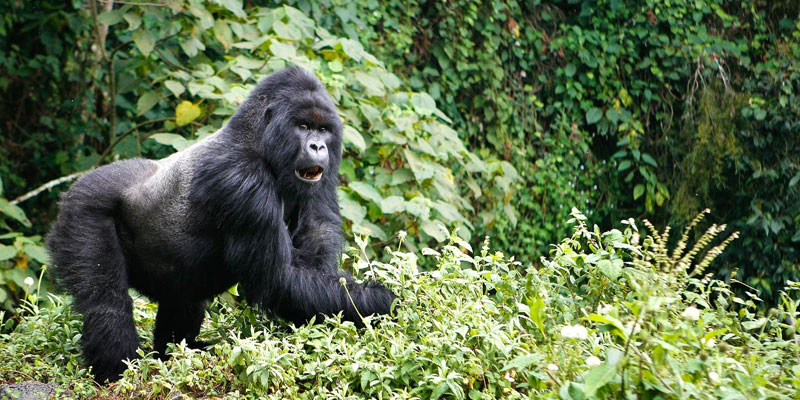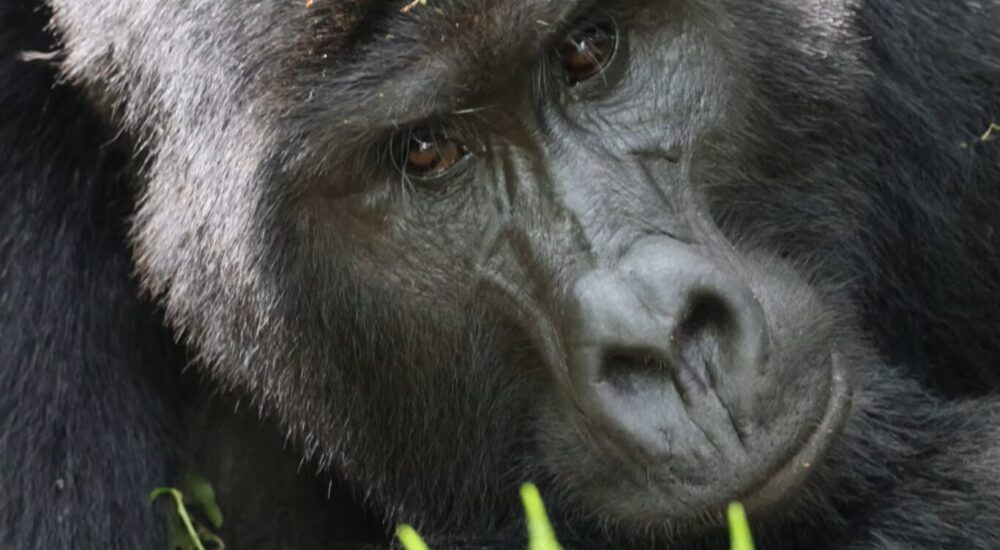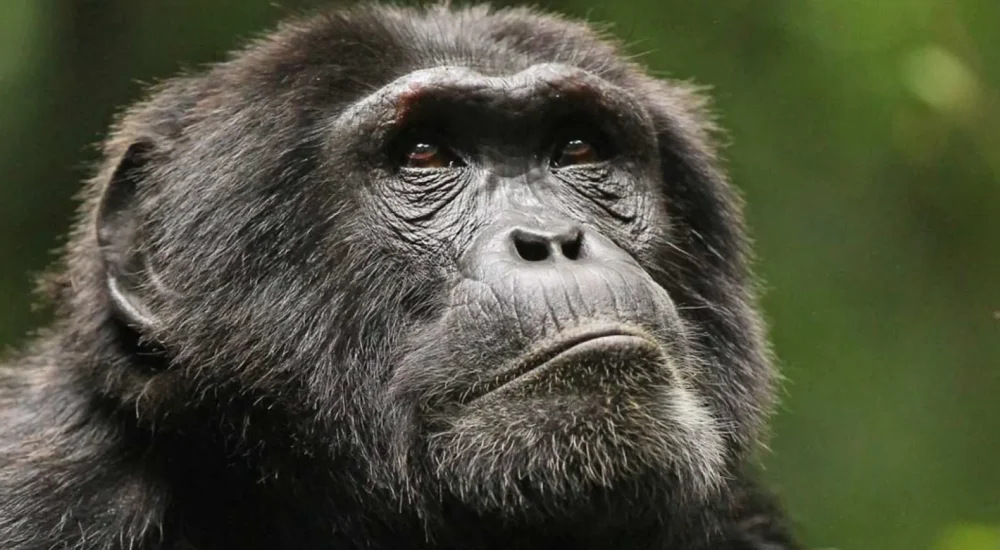Gorilla trekking in Uganda is one of the most sought-after wildlife adventures in the world.…
The Difference Between Western and Eastern Lowland Gorillas: Understanding the Unique Gorillas of Africa
What Are Western Lowland Gorillas?
The Western Lowland Gorilla (Gorilla gorilla gorilla) is the most populous and widespread of all gorilla subspecies. Western Lowland Gorillas are primarily found in the dense rainforests of Central Africa, spanning Cameroon, the Central African Republic, the Democratic Republic of Congo, Equatorial Guinea, Gabon, and the Republic of Congo. These gorillas are distinguished by their slightly smaller size compared to other subspecies.
Physical Characteristics of Western Lowland Gorillas
- Size: They are smaller than their Eastern counterparts, making them more agile in the dense forest undergrowth.
- Coat: Western Lowland Gorillas have a brown-grey coat with a distinctive auburn chest, which helps them blend into the forest floor.
- Skull Shape: Their skulls are wider, with more pronounced brow ridges and relatively smaller ears, which is another feature that sets them apart from the Eastern Lowland Gorillas.
Despite their smaller size, these gorillas are powerful and capable of surviving in some of the densest, most remote forests in Africa. They primarily live in lowland areas, where they create nests in the dense vegetation.
What Are Eastern Lowland Gorillas?
The Eastern Lowland Gorilla (Gorilla beringei graueri) is much larger and more robust compared to the Western Lowland Gorilla. These gorillas are mainly found in the forests of the Democratic Republic of Congo, particularly in the Kahuzi-Biega National Park and surrounding areas. The Eastern Lowland Gorillas are an endangered subspecies, with fewer individuals remaining in the wild.
Physical Characteristics of Eastern Lowland Gorillas
- Size: Eastern Lowland Gorillas are considerably larger than their Western relatives, with adult males weighing up to 400 pounds (180 kg).
- Coat: Their fur is typically dark brown to black, and they possess a thicker and longer coat, which provides warmth in the cooler highland areas where they live.
- Skull Shape: Eastern Lowland Gorillas have a more robust skull and a broader chest, which helps them support their larger bodies. They also have larger ears compared to Western Lowland Gorillas.
These gorillas primarily live in the lowland forests and often occupy regions with higher altitudes, making them more resilient to the cooler temperatures of the area.
Key Differences Between Western and Eastern Lowland Gorillas
| Feature | Western Lowland Gorilla | Eastern Lowland Gorilla |
|---|---|---|
| Size | Smaller, more agile | Larger, more robust |
| Coat | Brown-grey with auburn chest | Darker fur, thicker and longer coat |
| Skull and Face | Wider skull with pronounced brow ridges, smaller ears | Larger skull, broader chest, larger ears |
| Habitat | Dense lowland forests across Central Africa | Primarily in highland and lowland forests in DR Congo |
| Diet | Primarily fruits, leaves, and vegetation | Similar diet but can consume more fibrous vegetation |
| Endangered Status | Vulnerable, but more populous | Critically endangered, fewer in number |
Where to Find Western and Eastern Lowland Gorillas
If you’re keen to trek and encounter these incredible creatures in their natural habitat, understanding where to go is crucial.
- Western Lowland Gorillas can be found in countries such as Cameroon, Gabon, and the Central African Republic. They are widely distributed and more accessible for tourists. Notable destinations include Odzala-Kokoua National Park in Congo and Lopé National Park in Gabon.
- Eastern Lowland Gorillas, on the other hand, are more difficult to see. The best place to visit these gorillas is in Kahuzi-Biega National Park in DR Congo.
Is It Safe to Trek Lowland Gorillas in DR Congo?
Trekking Western Lowland Gorillas in the Democratic Republic of Congo has become safer in recent years, despite the country’s turbulent history. Companies like Monumental Expeditions and Safaris closely monitor security developments to ensure the safety of travelers.
Visas and Travel Information for DR Congo
To visit the Democratic Republic of Congo, travelers are required to apply for a visa in advance at a Congolese consulate or embassy. Unlike countries like Uganda or Kenya, where visas are available on arrival, DR Congo’s visa requirements are strict. The costs for a single-entry visa are as follows:
- 1-month visa: $100
- 2-month visa: $135
- 6-month visa: $400
You’ll also need a Yellow Fever vaccination card as a health requirement to enter DR Congo.
The Best Time to Visit Western Lowland Gorillas
While gorilla trekking is available year-round, the best time to visit the Western Lowland Gorillas is during the dry season, which spans December, January, February, June, July, August, and September.
Where to Stay When Trekking Western Lowland Gorillas
Lodging options vary in price, with Lango Camp and Mboko Camp offering both mid-range and luxury accommodation in Odzala-Kokoua National Park.
Book Your Gorilla Trekking Adventure with Monumental Expeditions and Safaris
Monumental Expeditions and Safaris offers expert-guided trekking tours to both Eastern and Western Lowland Gorillas. With a focus on eco-friendly safaris and responsible tourism, they help protect wildlife and contribute to local community welfare.


